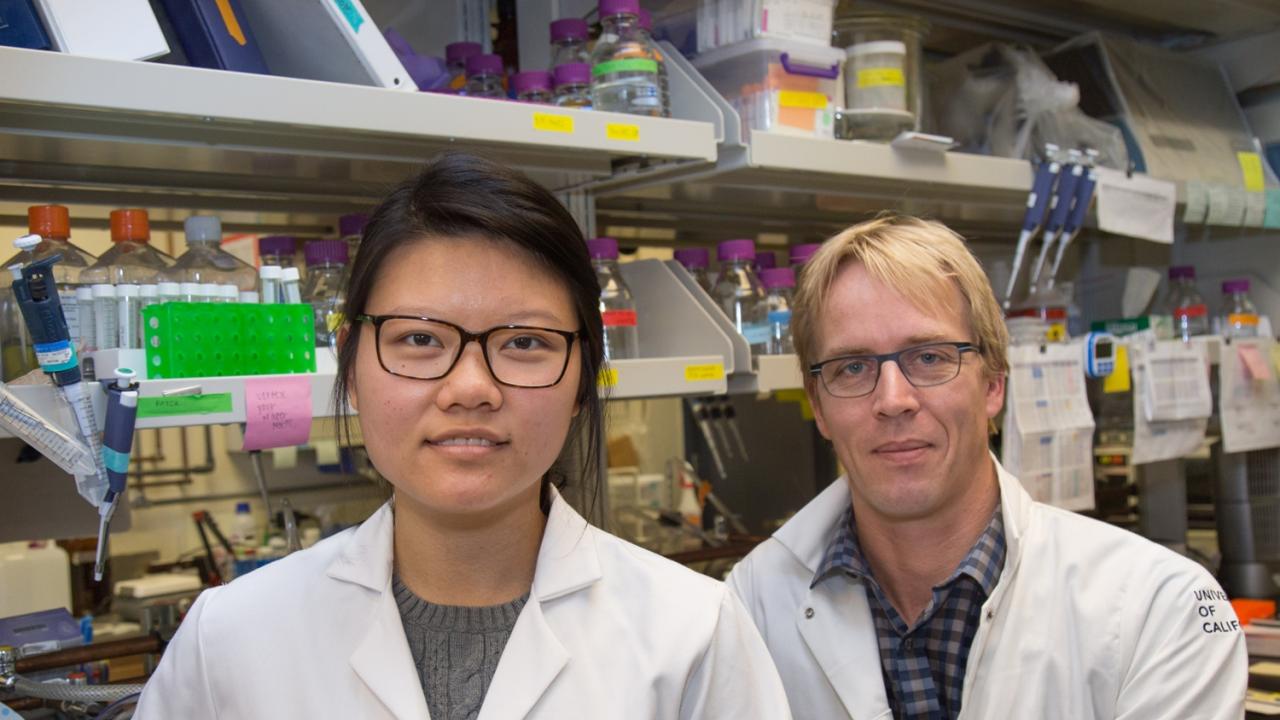
Diabetes Research in Huising Lab Emphasizes Importance of Reproducibility in Science
In the United States, around 30 million people live with diabetes. It’s among the top 10 leading causes of death in the country, according to the Centers for Disease Control and Prevention. With no cure, treatment and control remain the only options for diabetes patients.
In a new paper appearing in Cell Metabolism, UC Davis College of Biological Sciences Associate Professor Mark Huising, Department of Neurobiology, Physiology and Behavior, and graduate student Sharon Lee refute a previous study that claimed an antimalarial drug could be used to treat type 1 diabetes.
“First we had hoped that we would be able to replicate the findings, but they didn’t hold up,” said Huising, who holds a joint appointment with the UC Davis Health Department of Physiology and Membrane Biology. “People with type 1 diabetes, they see these stories come out and they think maybe there’s something on the horizon and then nothing ever follows through.”
Understanding diabetes at the cellular level
On the surface, symptoms for type 1 and type 2 diabetes are quite similar, but the underlying causes vary significantly. In type 1 diabetes, the body fails to create enough insulin, a hormone produced by the pancreas that regulates cellular intake of nutrients. In type 2 diabetes, cells no longer respond efficiently to insulin.
Insulin production is a job that falls to the pancreas, specifically hormone-producing regions called pancreatic islets. Within these regions are cells known as alpha and beta cells. Beta cells are integral to creating insulin. “That’s the cell that if you lose (insulin production), you get type 1 diabetes,” said Huising.

Shown alongside a control sample, the artemether sample failed to transform alpha cells into beta cells. Alpha cells are stained green and beta cells are red. Transdifferentiated cells would appear green with a red nucleus. Mark Huising/UC Davis
Huising and his colleagues specialize in the functions of pancreatic islets, from how the islets secrete hormones to how their alpha and beta cells maintain identity. Since type 1 diabetes is characterized by a lack of beta cells, Huising explained, there’s always been scientific interest in any process capable of generating such cells.
In fact, Huising and his team previously discovered a new type of insulin-producing beta cell, announced in a study published in Cell Metabolism. That new type of cell, according to Huising, may represent an intermediate stage between alpha and beta cells.
But could scientists actually trigger alpha to beta cell conversion? And if so, could they develop a medication to act as a trigger?
An eye-catching ‘discovery’
Such a process and trigger were reported in a paper that appeared in Cell in early 2017. In the paper, researchers claimed the antimalarial drug artemether could convert alpha cells into functional beta cells by inhibiting a protein that helps alpha cells maintain their identity.
While alpha cells converting into beta cells had previously been described, this was the first time an existing drug had been reported to stimulate this process, according to Huising.

“There was a lot of excitement,” Huising said, recalling his initial response to the study, “We had this really phenomenal claim that there was a drug that could actually turn alpha cells into beta cells.”
Outfitted with the precision tools to capture alpha-to-beta cellular conversion, Huising enlisted Biochemistry, Molecular, Cellular and Developmental Biology graduate student Sharon Lee to assist with replicating the original experiment.
“We were hoping, expecting, to confirm,” Huising said. “We weren’t able to.”
The importance of reproducibility
The artemether replication experiment started off as a rotation project, a way to familiarize then-rookie lab member Lee with the tools and techniques of the Huising Lab.
For her experiments, Lee used pancreatic islets derived from mice, preserving them in the state they would maintain naturally in a mouse’s body.
After around four months of treating various pancreatic islet cells with artemether, something was clear. The drug wasn’t triggering alpha to beta cell conversion, as the initial Cell paper had claimed. While Lee and Huising saw the drug inhibit the protein meant to help alpha cells maintain identity, they did not witness a subsequent alpha to beta cell conversion.
“I think what the original paper missed was looking at the effect of the drug on other cell types, because within the pancreas, it’s not just alpha cells,” said Lee. “They forgot about the other cells, like the beta cells which are the majority of cells within pancreatic islets.”
Lee and Huising’s paper highlights the importance of reproducibility, a perennial and hotly contested topic of concern at all levels of scientific research. It also demonstrates how routine lab assignments meant to educate students can provide the foundations for published research.
“It’s important to realize that our work has an impact in the real world,” Huising said. “We should continuously strive to hold ourselves and our peers to a higher standard, particularly when we talk about discoveries that promise a possible cure for diabetes.”
Contributors to the research include co-first author and UC Davis researcher Talitha van der Meulen, UC Davis graduate students Glyn Noguchi, Alex Mawla, Els Noordeloos and Michael Adams, and Cynthia Donaldson from the Salk Institute for Biological Studies. The work was supported by an Individual Biomedical Research Award from the Hartwell Foundation and a Career Development Award from the Juvenile Diabetes Research Foundation.
